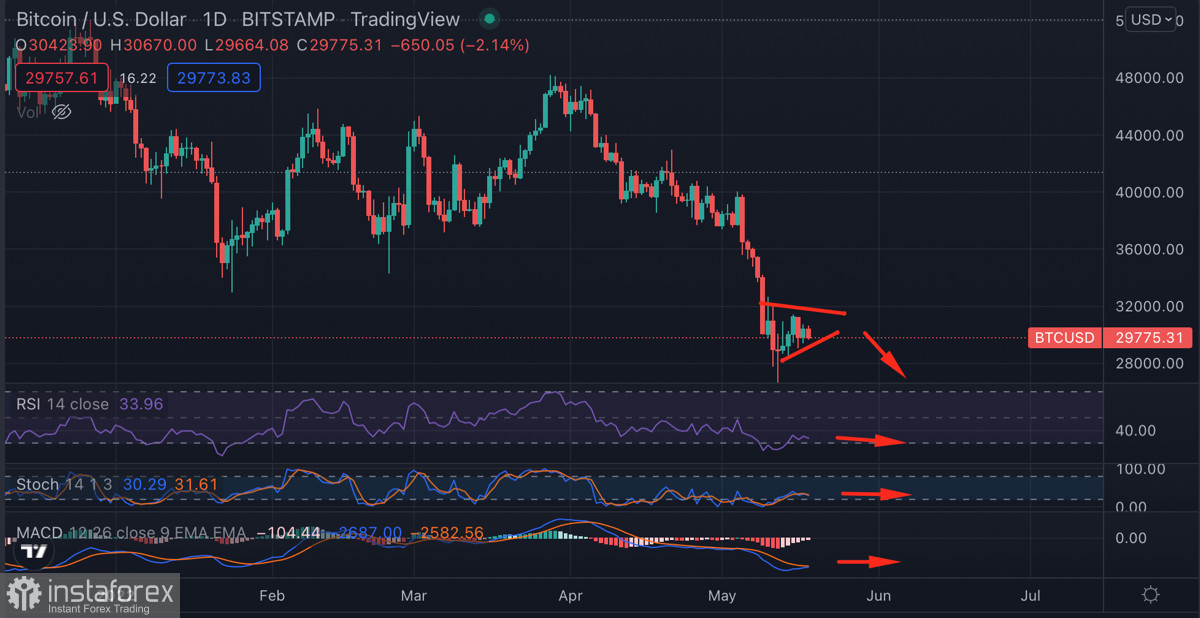Bitcoin has experienced a powerful bearish week and has been trying to stabilize around $30k for more than 8 days. The nature of the cryptocurrency's rebound from the $24k mark gave rise to hopes that it was a local bottom and the asset would soon make a trend reversal. However, it is important to look at the bigger picture.
So, as it turns out, the digital asset has formed 7 bearish candles in a row on a weekly timeframe, which is an important bearish signal. Such a powerful pattern indicates that the explosive growth of the cryptocurrency should not be expected in the near future.
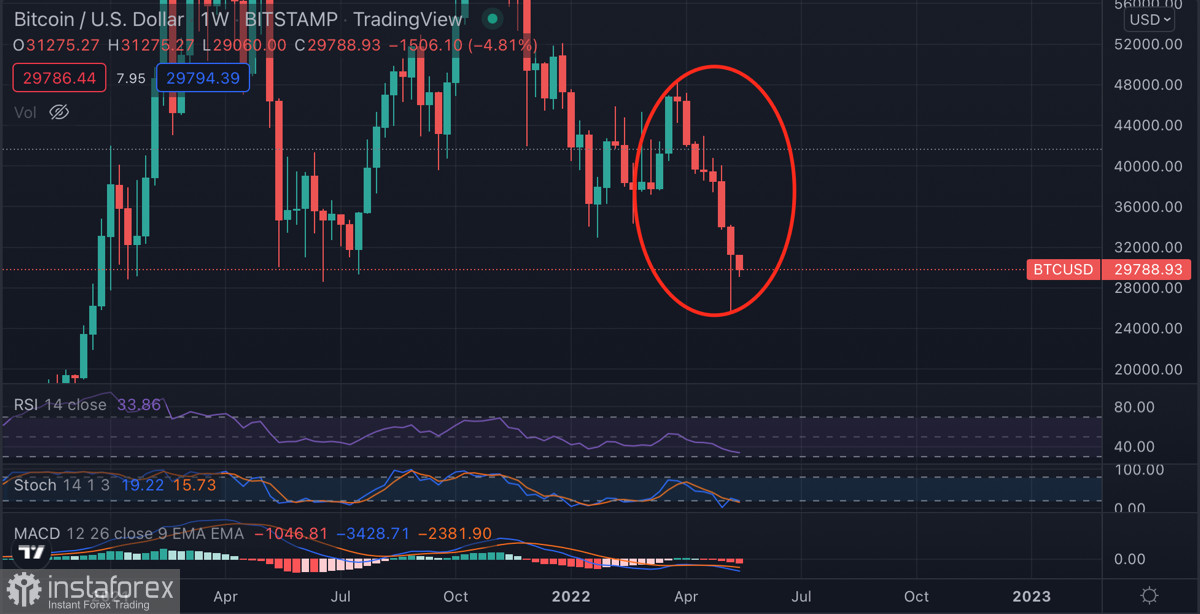
Despite this, Bitcoin will have local windows for growth, which can be tracked by the movement of the US dollar index chart. In mid-May, the asset has a negative correlation with this indicator. This suggests that with local DXY corrections, cryptocurrencies as a high-risk asset begin to grow. Thanks to the local correction of the US dollar index, Bitcoin managed to reach the $29k–$30k area and start consolidating. On the 4-hour chart, the asset has formed a local bullish formation, with an upward breakdown of which the price has a potential of around $35k. A notable fact is that the formation of a bullish pattern occurred during a local DXY correction.
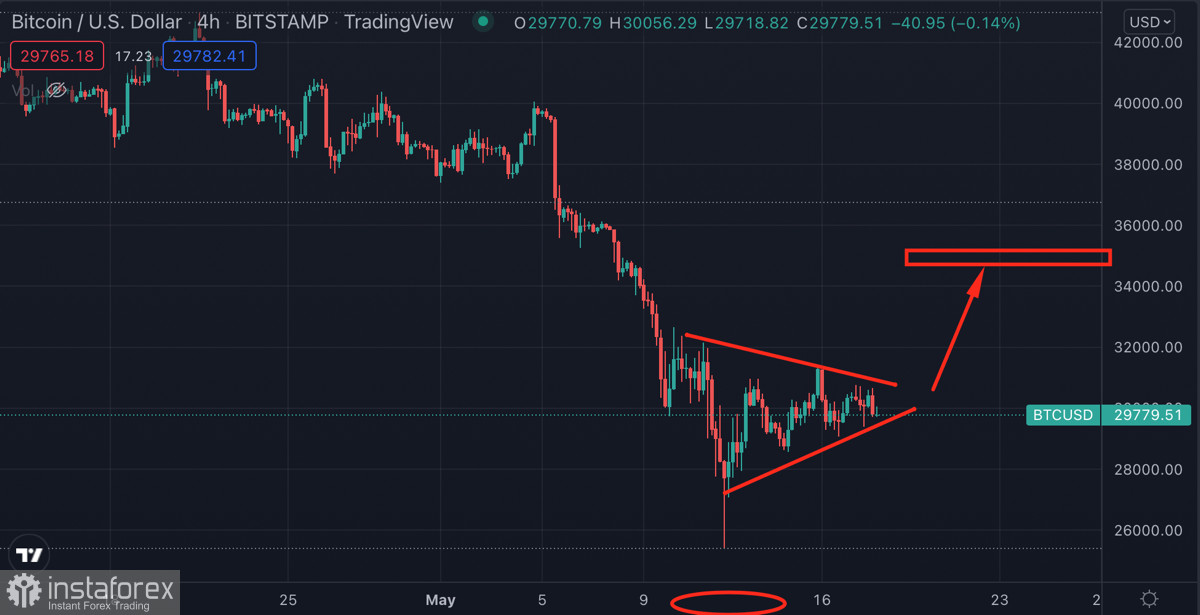
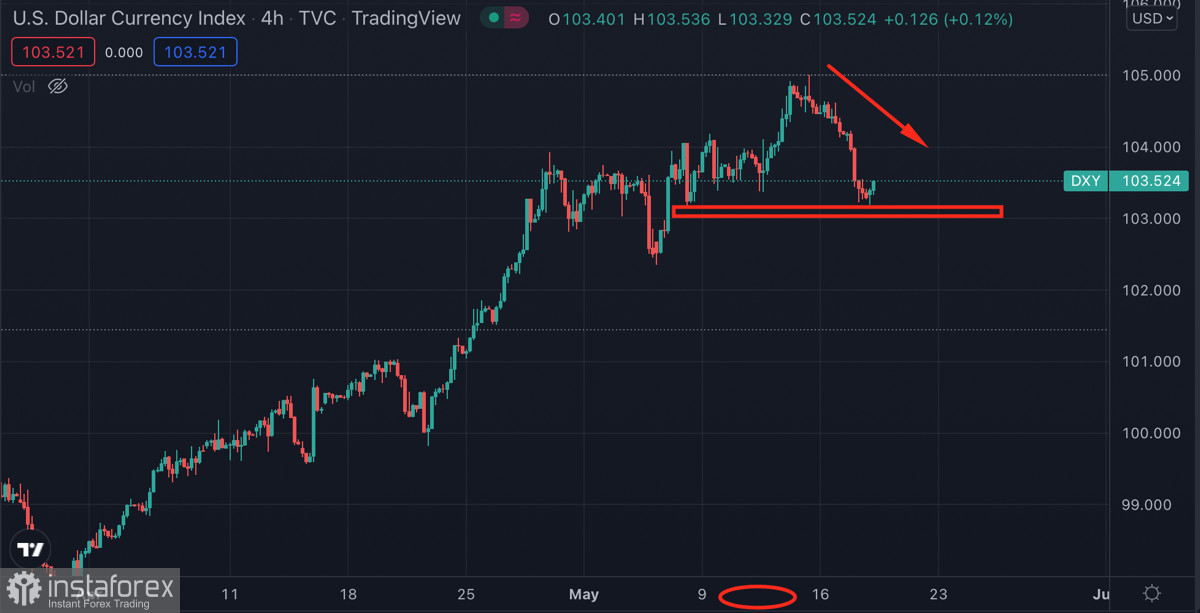
However, as of May 18, the US dollar index reached a local support zone and began to recover. This suggests that investment flows in Bitcoin will decrease. As a result, the bullish pattern may not materialize or may be partially realized. In any case, this corridor is almost over. An inflation rate of 8.3% indicates that the current Fed policy is being maintained, which means that cryptocurrencies will fade into the background in the near future. This is indirectly indicated by the transfer of most of the Tether reserves to US Treasury bonds, which is also provided by USD. With this in mind, we can safely say that the BTC bear market has entered a new stage.

After attempting to implement the pattern, Bitcoin will continue to consolidate in the $29k–$30k area. However, the price of BTC will start to fall afterward, as the connection between the cryptocurrency and the stock market remains strong. The next major stage of Bitcoin price decline will occur in June, when the next Fed meeting will take place and the quantitative tightening program will begin. All this is expected to lead to a recession in the economy and the fall of most markets. With this in mind, the heart is warmed by the hope that the current decline and correlation with stock indices are local in nature. However, to make sure of this, Bitcoin will have to form more than one bearish candle.
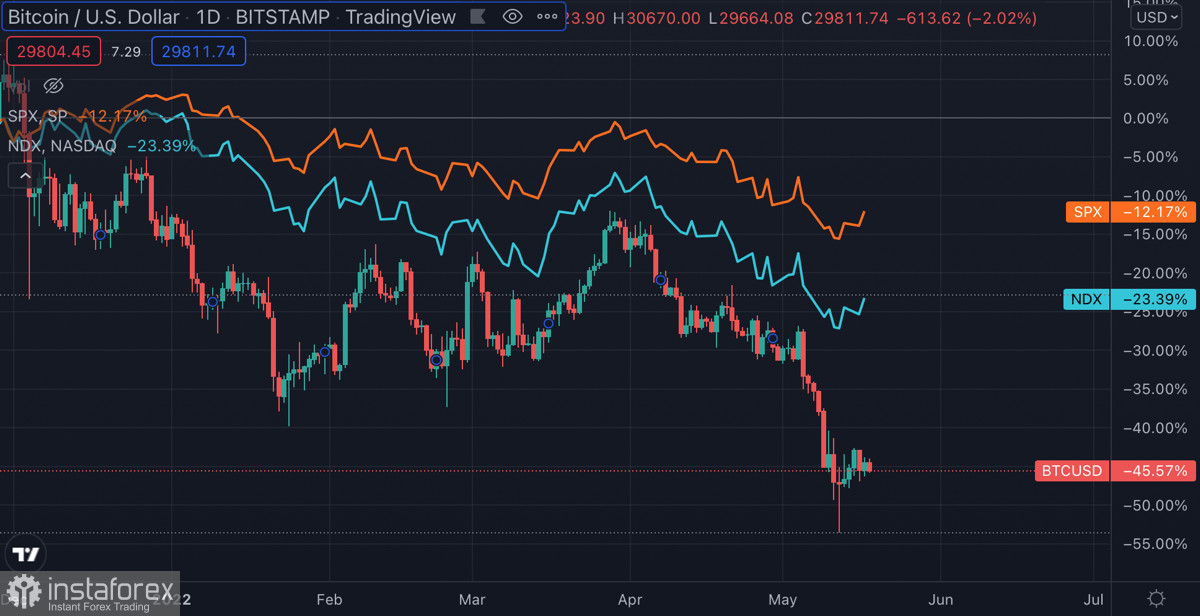
As of May 18, investors began a period of active accumulation. The volatility of BTC has decreased to an acceptable level, which also indicates a stabilization of the situation. There is a process of collecting free liquidity, but the ratio of longs and shorts has changed in favor of longs. This may indicate the likelihood of another manipulation in order to knock out "weak hands."
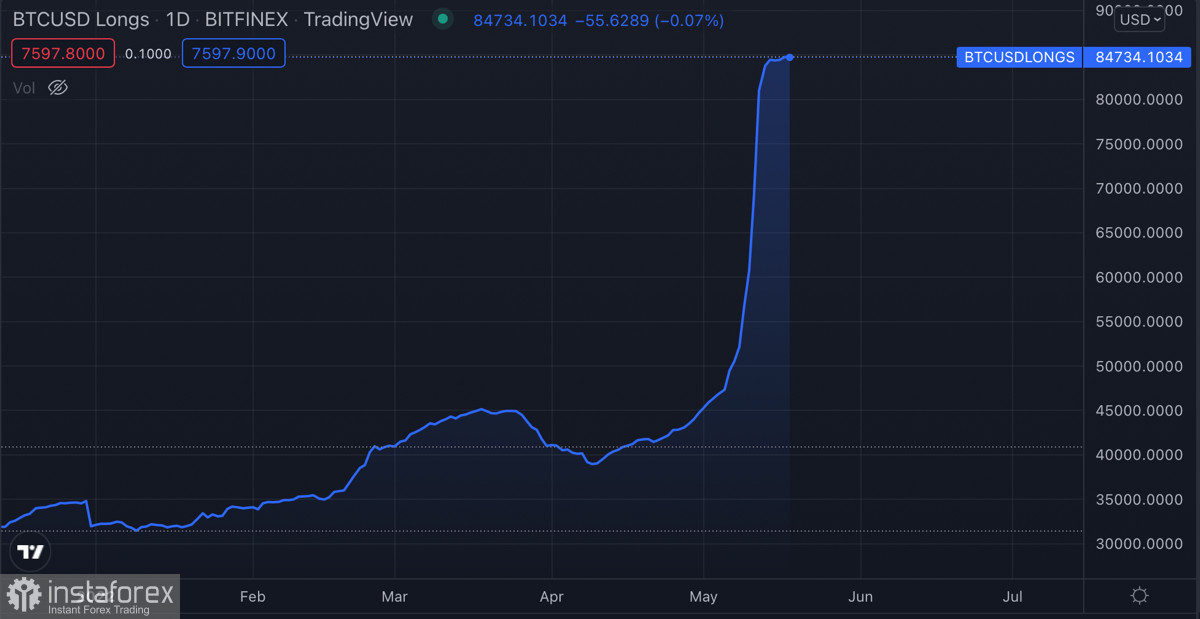
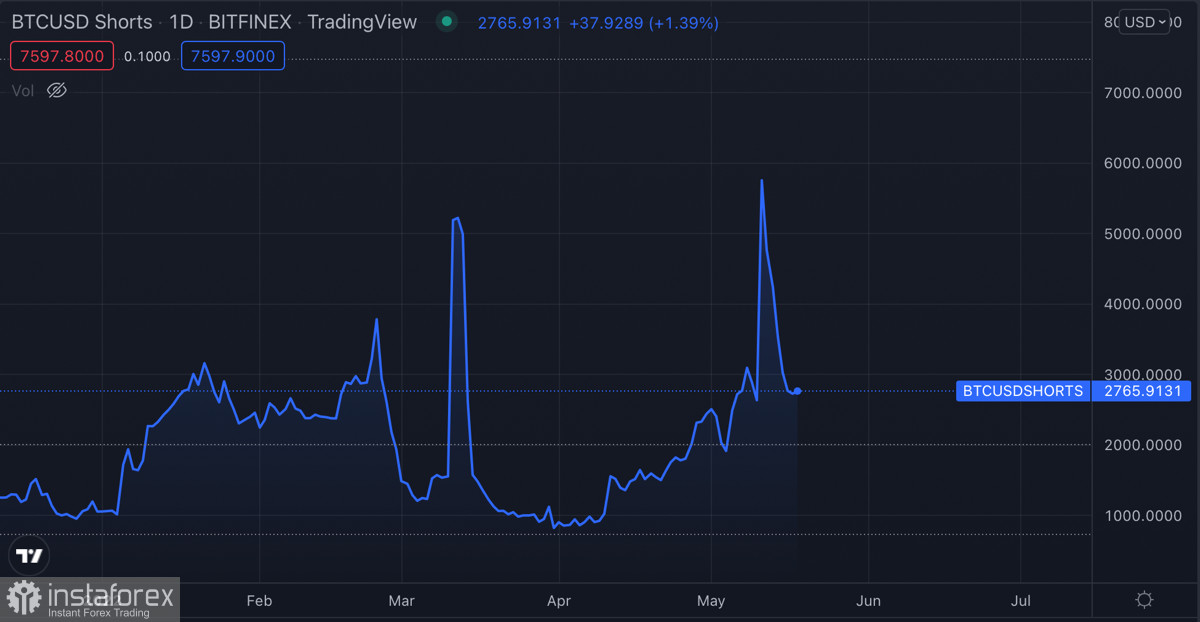
On the daily timeframe, Bitcoin remains in the consolidation stage with a gradual price tightening. In the short term, this will lead to a local surge in volatility and the price will go beyond the narrow range of $29k–$30k. And judging by the completion of the DXY correction, we are in for a decline beyond the round $30k mark.
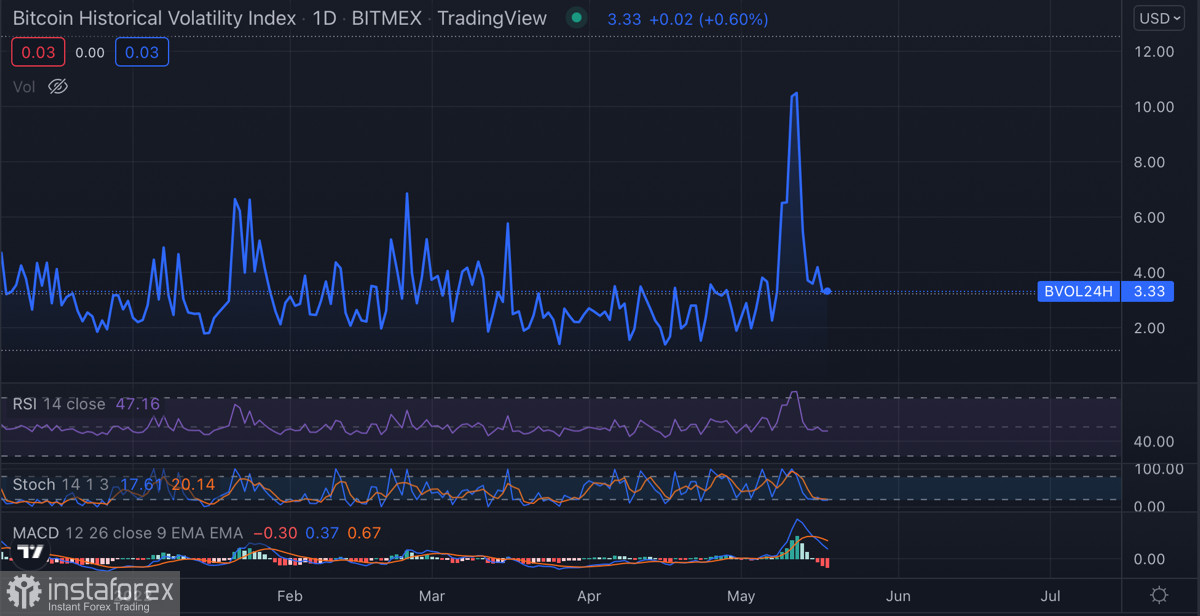
Technical indicators point to growing buyer weakness: RSI and stochastic are falling towards the lower border of the bullish zone, while MACD continues to move below zero, but is approaching the formation of a bullish crossover. Nevertheless, the market began to stabilize after the storm. Therefore, in the near future, investors will take actions that do not affect the price of BTC/USD.
